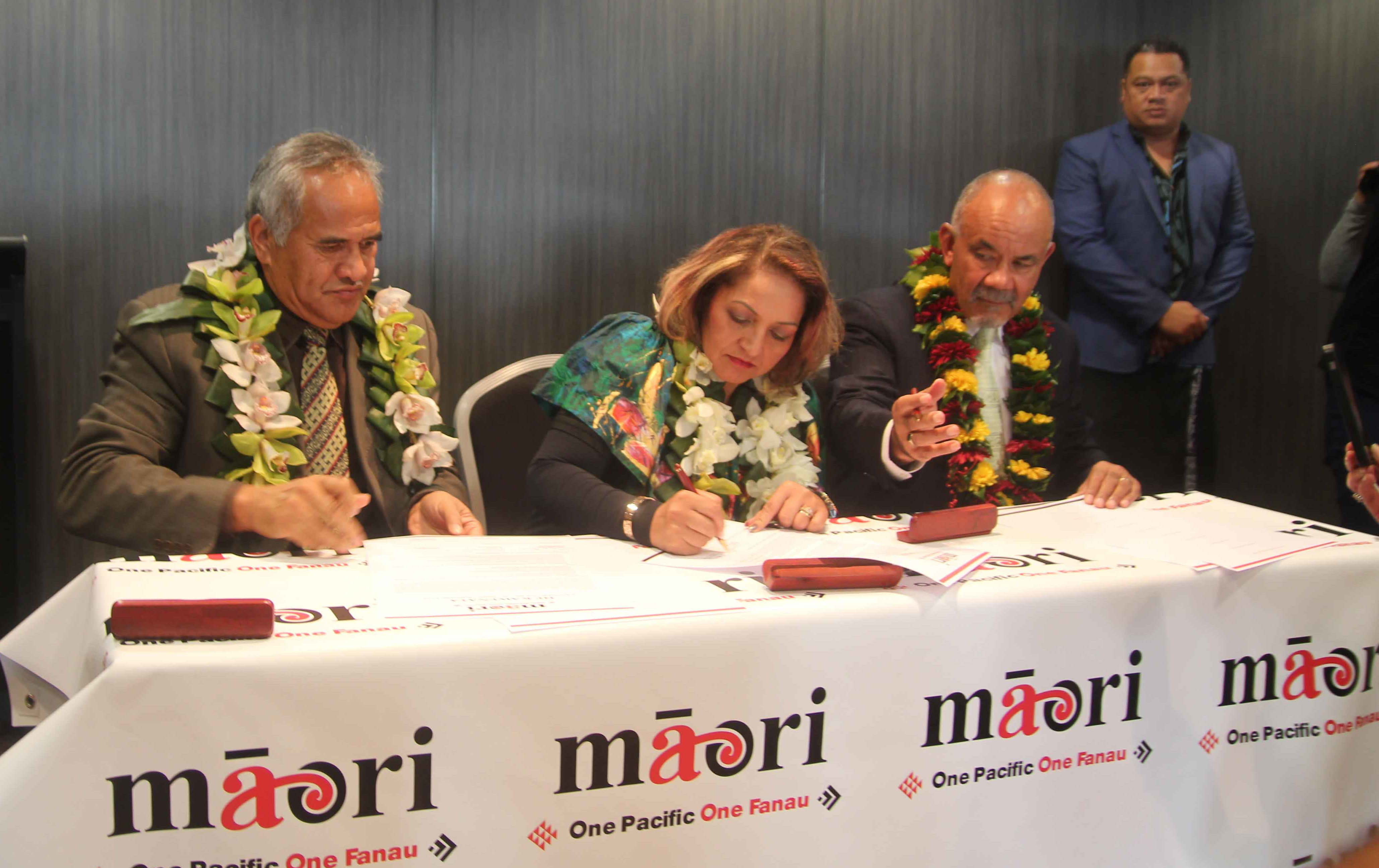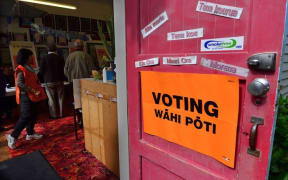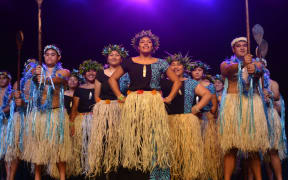Opinion - The Māori Party has endured a miserable election, ousted from Parliament with the loss of the Waiariki seat - but the party's venture into Pacific politics is a story which shouldn't be overlooked.

The Māori Party and One Pacific signed a partnership earlier this year. Photo: RNZ/ Sara Vui-Talitu
A group of aspiring Pacific politicians approached Māori Party and its president Tukoroirangi Morgan earlier this year and a deal was subsequently brokered.
Under the banner One Pacific, they committed to contest some general electorates as part of the Māori Party.
The question of how viable a Māori/Pacific political alliance in a small party, indigenous setting was answered on Saturday. The Māori Party had seven Pacific candidates, doubling the number of general electorates the party contested.
Despite these Pacific candidates, several of whom put in energetic campaigns, the Māori Party failed to make a dent - in most of these electorates the Māori Party vote remained the same or declined.
Overall the Māori Party share declined from 1.4 percent in 2014 to 1.1 percent in 2017. The One Pacific/Māori Party candidates all found the going very tough. None got more than 700 candidate votes, and most fewer than 300.
Each of the Pacific candidates polled higher individually than the Māori Party vote in their electorate.
Previous Māori and Pacific alliances have been difficult, and this one was no different.
In the last week before the election, differences emerged between the two, as a One Pacific candidate and the Māori Party released contradictory press releases about takatapui/marriage equality - a flashpoint with other political parties as well.
So do electorate candidates help smaller parties with their party vote?
Adding more Māori Party candidates did not seem to help the party vote, nor did adding Pacific candidates - at least not the ones they did.
This is not just a Māori Party pattern.
Chloe Swarbrick's candidacy for the Green Party in Maungakiekie is another example. Ms Swarbrick proved a spoiler: capturing 3000 candidate votes in an electorate where the difference between Labour and National was fewer than 2000.
More importantly, while Ms Swarbrick polled a little better than her 2014 Green predecessor, with her candidacy the Greens' party vote in Maungakiekie halved.
Also at play seems to be a generational shift within politics.
The Māori Party / One Pacific deal was one brokered between 'chiefs'.
Subsequently the Māori King even approached the Tongan King to support the Māori Party, though RNZ was officially told this was not the case. In Samoa efforts were made to grow the One Pacific vote.
In Waiariki, Tamati Coffey unseated a widely admired, experienced, Māori leader in Te Ururoa Flavell.
Mr Coffey's campaign was energetic and he had a good profile and social media presence, and then there was the 'Jacinda Effect'.
But his success can hardly be solely attributed to Ms Ardern; he was polling strongly before the change in Labour leadership.
Next steps for the Māori Party look likely to involve Lance O'Sullivan, who will surely signify a new direction and generation.
It will be interesting to see if there is still a Pacific path in the Māori Party's future.
*Damon Salesa is Associate Professor of Pacific Studies at the University of Auckland.



